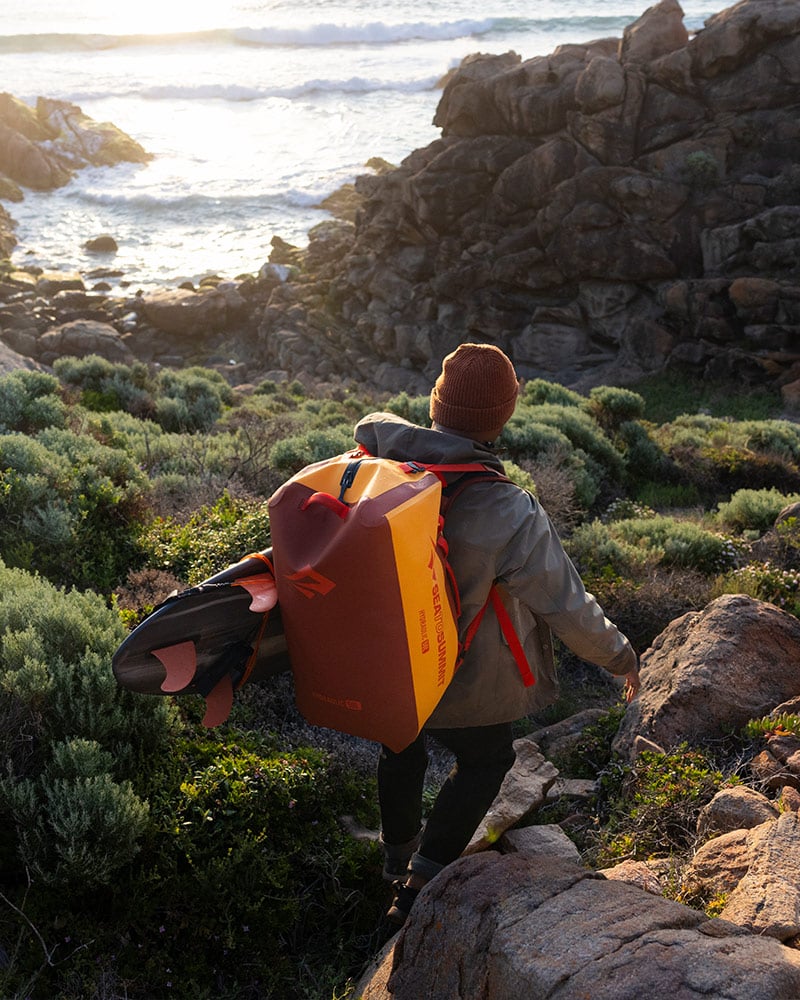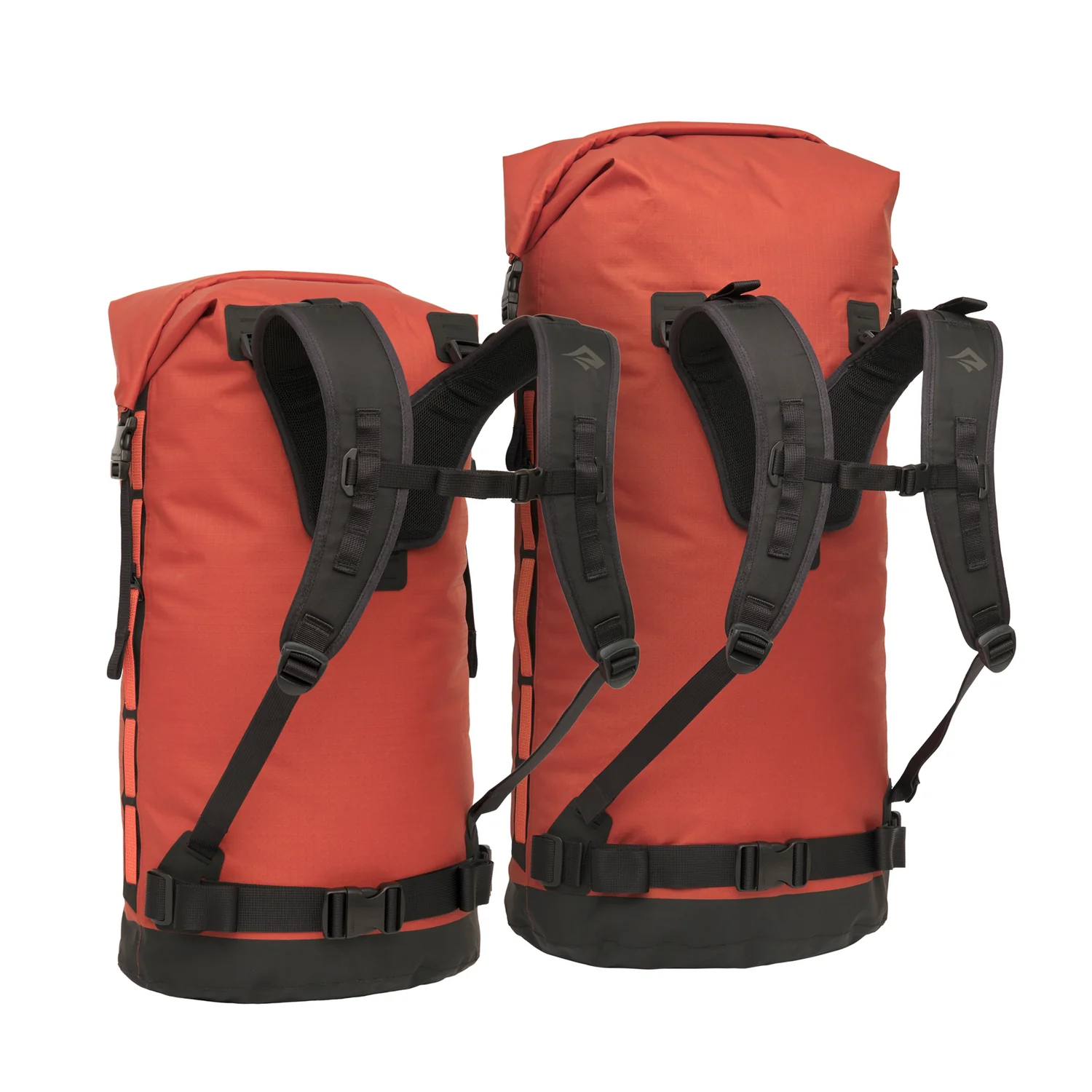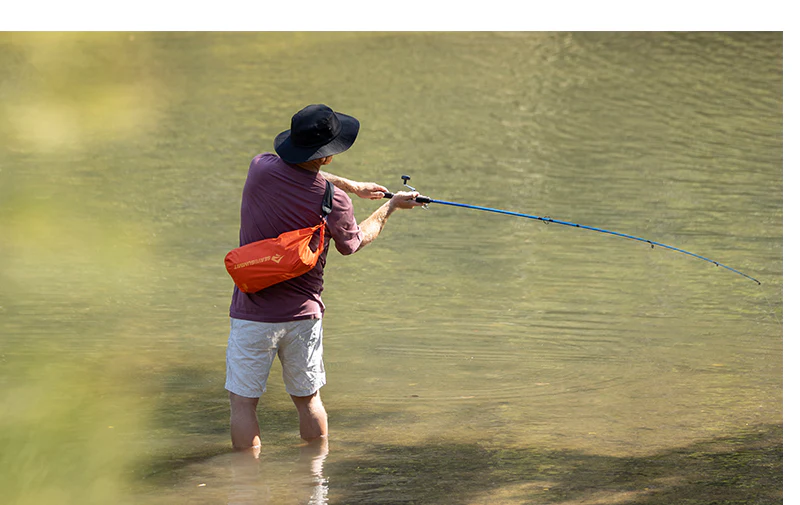Paatuwaqatsi, “Water is life,” they say on the Hopi Reservation. In the drier corners of the world, like the American Southwest, this is undoubtedly the case. Perpetually in short supply, and the supply getting ever shorter, every drop is precious. However, there’s no denying we live on an overwhelmingly wet planet, and the humble H2O molecule in all its states can be one of the most frustrating and damaging substances to keep out of our storage and gear. Dry bags have long been a go-to solution for keeping water at bay, especially if you travel out in the elements on an ADV bike, or the elements come to you, like the inside of my perpetually leaky old Land Rover. Sea to Summit’s line of dry storage strives to keep the swamp from encroaching on your next adventure.
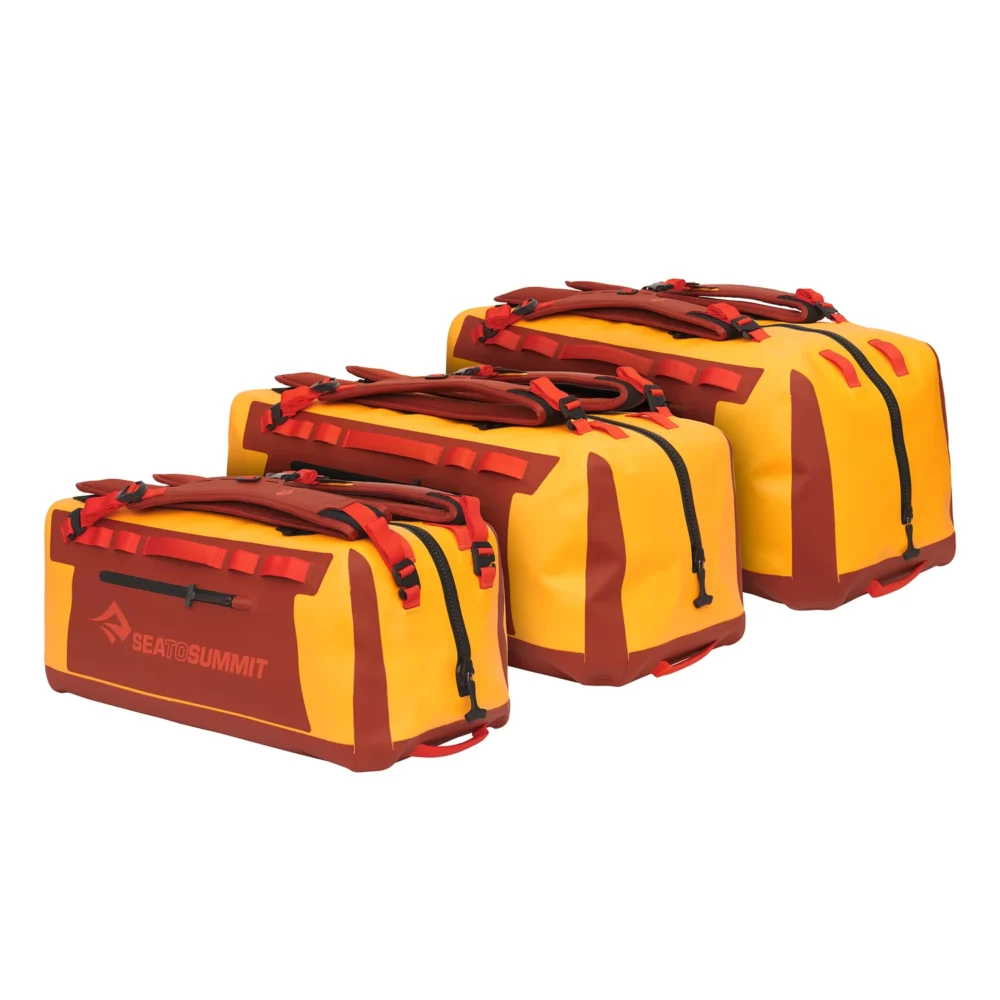
Hydraulic Pro Dry Pack | $399-$499
The eye-opening spec of Sea to Summit’s Hydraulic Pro packs is that they are not only waterproof and fully submersible, they are also airtight. The Hydraulic Pro accomplishes this feat with a highly engineered zipper from Germany’s TZIP, fully welded seams, and Sea to Summit’s proprietary 1000-denier Hydraulic fabric. The company says these burly packs are nearly indestructible, and after a hard 12 months of use, I am inclined to agree. The airtight claim is, one could say, airtight, as well. With the zipper locked into its fully closed position, you can sit on the Hydraulic Pro and it stays fully inflated, losing not a single breath of air. While it is technically submersible, this is almost impossible to test, as I did in my bathtub, because the Hydraulic Pro stubbornly floats on the surface. If paddle sports or motorcycle travel in sodden environments are on your agenda, this duffel-style bag will hold up to whatever soaked conditions you can throw at it.
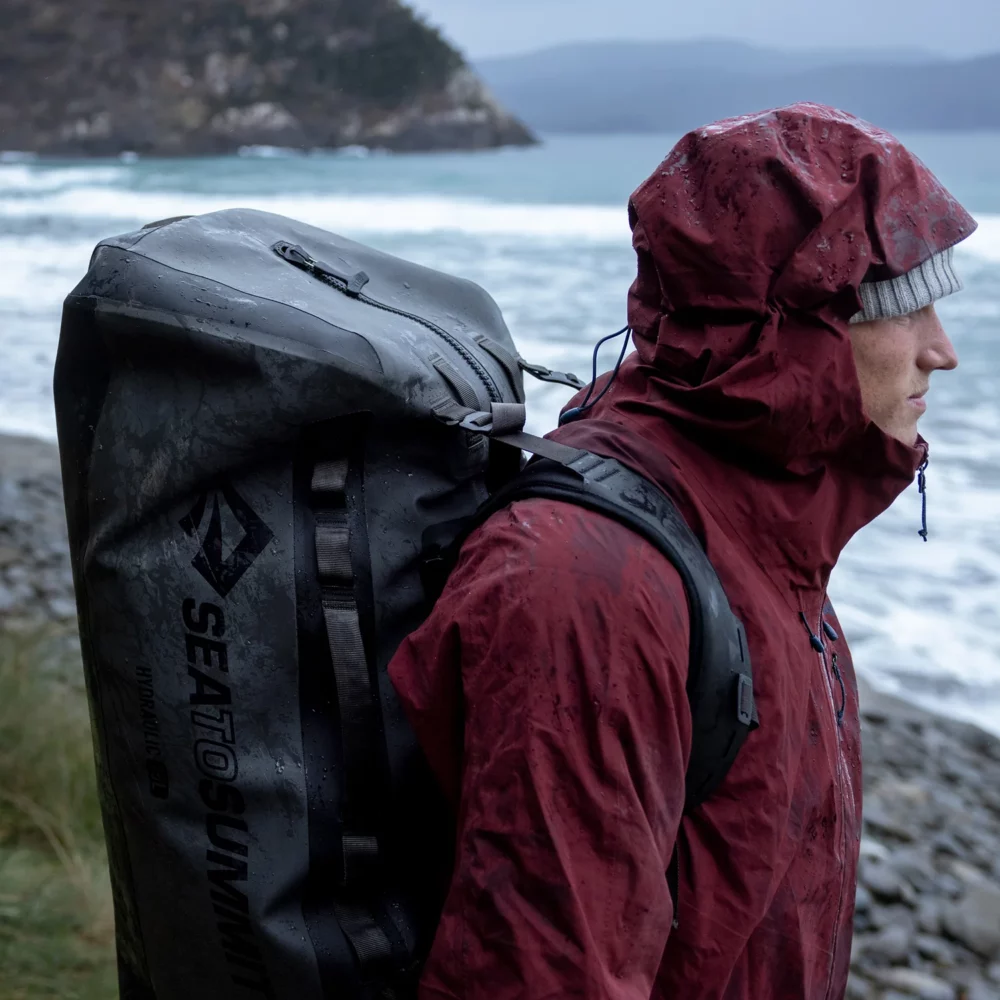
The Hydraulic Pro comes in three sizes, 50, 75, and 100 liters, and features useful load-tested grab handles, daisy chains, and a small zippered pocket (also waterproof) on the outside of the bag. Also included is a high-quality, removable backpack harness for easy transport. The harness has EVA foam padded straps and metal attachment hardware, but I found it fairly difficult to take on and off the bag, partially because the manufacturing tolerances are so tight. Also hard to wrestle with is the TZIP zipper—that airtight construction comes at some cost—but Sea to Summit does throw in a small tube of zipper lubricant. At less than 3.5 pounds, the 50-liter Hydraulic Pro is admirably lightweight, given the robust construction. Prices for this top-of-line waterproof storage solution start at $399.
Big River Dry Backpack | $135-$200
If the Hydraulic Pro’s pricing seems a tad out of reach, or you’re not in need of a tiny ersatz river raft, the Big River dry backpack is a solid and modestly-priced alternative. Available in 30-, 50-, and 75-liter sizes, the Big River is a roll-top-style dry bag made from an abrasion-resistant 420-denier nylon material and is fully waterproof in situations where it won’t be fully submerged. The EVA foam padded harness has sternum and waist straps for extra stability, and daisy chains on the long edges of the bag allow for easy adjustment of the buckles for the Hypalon roll-top and secure lashing. The composite buckles themselves are field-replaceable with just a Phillips screwdriver.
Also something of a featherweight, my 50-liter Big River weighed just 1.5 pounds with the harness in place. The core features that impressed me with this waterproof dry bag were its resistance to sharp objects, the oval-shaped profile that makes for easy stacking and prevents roll-aways when fully loaded, and especially the white interior. The bright TPU material inside the bag reflects plenty of light, making it much easier to find items buried in the bottom. While not exactly feature-rich, the Big River delivers on its promises through its simplicity.
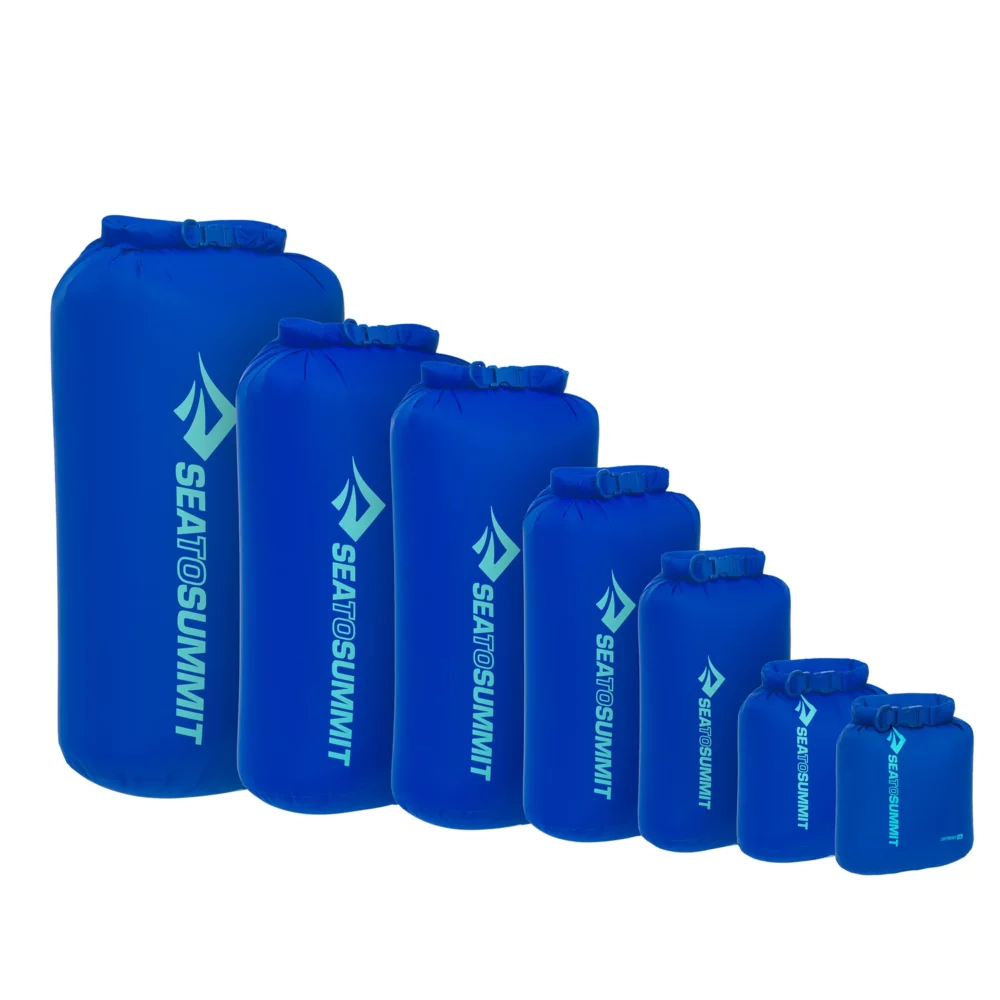
Lightweight Dry Bag | $20-$40
Why stash your gear in a smaller dry bag when it’s already packed inside a larger one? Minute items tend to filter to the bottom of more cavernous bags, making them difficult to track down on the fly, and particularly moisture-sensitive kit like medical supplies, cameras, and electronics often could use another layer of protection. Small bags in a variety of sizes and colors also keep your outfit organized by collecting gear categories together and making them easily identifiable. When you pack your first-aid gear into a bright red bag, it’s dead simple to find in a hurry.
The Lightweight line of dry bags (even the 35-liter version weighs only a few ounces) is waterproof (when not fully submerged) and made from soft and flexible 70-denier recycled nylon. All seams are double-stiched and welded for durability, and the Hypalon roll-top closures are non-wicking. Like the Big River backpack, Lightweight bags have a bright white TPU interior coating that makes rummaging around for the exact item you need much simpler. A D-ring attachment is bonded to the top for secure lashing, stringing together with other Lightweight bags, or clipping into the useful Drybag Sling ($10), which makes carrying weightier packed bags easier over the long haul. Lightweight bags are available in five colorways and with an optional clear window for identifying contents with just a glance. They also come in a first aid version in several sizes with a large cross logo for quick ID when things go sideways.
Images: Sea to Summit
Read more: First Look :: 2025 Ford Expedition
Our No Compromise Clause: We do not accept advertorial content or allow advertising to influence our coverage, and our contributors are guaranteed editorial independence. Overland International may earn a small commission from affiliate links included in this article. We appreciate your support.


